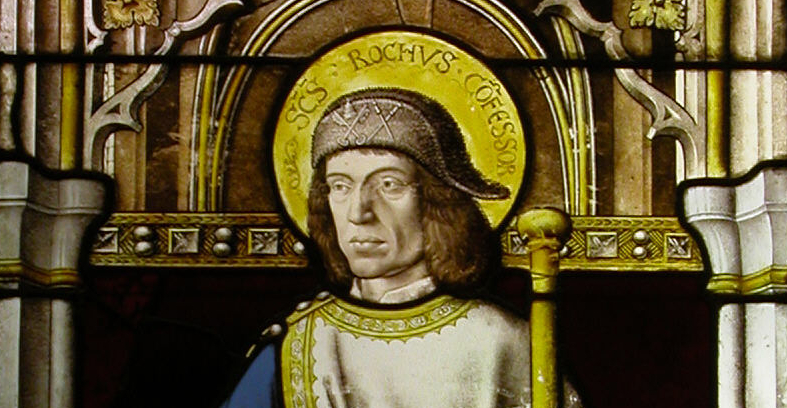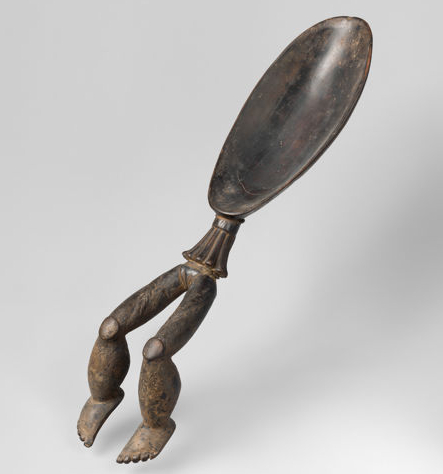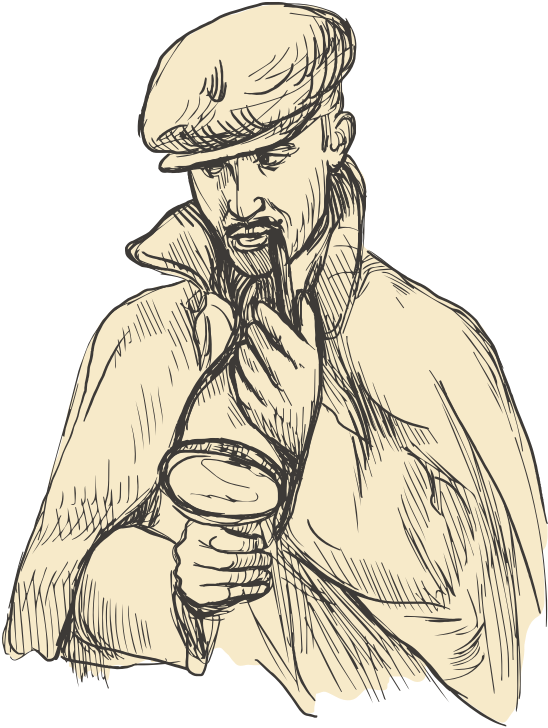Our Founder Reveals the Idea that Led to Watson Adventures
2019 marks the 20th anniversary of Watson Adventures. One way we’re marking the occasion is with a new weekly series of blog posts that look back at the highlights—and perhaps a lowlight or two—of the past two decades. What better way to start than with our own origin story, as told by Bret Watson.
Amused at the museum
It all started with Mick Jagger. On a Friday evening in 1993, I was wandering alone through the galleries of New York City’s Metropolitan Museum of Art, and chance took me into the Medieval Treasury. A full-length rendition of a saint in a stained-glass window made me pause. To me, he resembled a young Mick Jagger. The saint was hitching up his skirt to display a sore on his thigh—a bubo, the label explained. As in, the bubonic plague. He was the patron saint of plague sufferers. No wonder he looks like he can’t get no satisfaction, I thought. Appropriately enough, his name was St. Roch—which can be pronounced St. Rock.

The next room featured medieval household objects. I peered into a large metal bowl, mounted on the wall so one could faintly make out the embossed image on the bottom…the bare bottom of a man over the knee of a woman, who was spanking him. The label reported the bowl’s material in suitably deadpan style: “beaten brass.”
These gags practically write themselves, I thought. The museum was a treasure house of such unusual details that most visitors probably missed. The saint popping out of a dragon’s mouth. The traditional bull fighter who was actually a woman. A reliquary featuring a tooth supposedly from the mouth of Mary Magdalene. The Siddhartha who looked like he’d gone too far with the SlimFast, with his rib cage in stark view through taut skin. The kids hiding from the census taker. The weird African ladle with legs. The bust of a woman on the mantel whose earring could be tugged to reveal the time in her eyes—something you’d only know if you read the fine print on the dimly lit label. You could literally gaze into her eyes for hours. Or at least her left eye; you could gaze into the right eye for minutes.

What to do with this stuff?
How could I get my friends to see these funny finds? Could I turn them into a sort of comedy routine at the Met? I could string them together…maybe make my friends find them…give them clues…prompt them to answer a question that was like a joke, with the answer as the punch line. It would be sort of a comedy scavenger hunt.
In the weeks and months ahead, I spent way too many hours searching out amusing, amazing, strange, and wonderful objects and details in the museum. I had pages and pages of scrawl in notebooks. This was before digital cameras and websites, so I had to take extensive notes about the art, the location, what was nearby, and make inept drawings.
I wrote a two-hour hunt with 70 questions. Mind you, the typical two-hour Watson Adventures hunt at the Met today has no more than 28 questions. The hunt included these questions:
- Which stained-glass saint looks most like Mick Jagger? (Look for the guy hitching up his skirt to show a little leg.)
- In a room with a case full of medieval door equipment, what’s the wife doing to her husband on the beaten plate?
Those questions improved over the years. For instance, the second question changed to make hunters discover that the bowl was made of beaten brass. But the emphasis was always on the idea that no previous knowledge about art or the museum would be required to answer the questions. I wanted the game to be inclusive and to feature discovery, laughter, and teamwork. The hunts remain that way to this day.
I invited my adventurous friends for an evening of fun at the museum. Afterward we reconvened at a friend’s apartment, where we partook of pizza and I shared the correct answers to the questions and presented Met coffee mugs to the winners. It took another six years before this odd hobby turned into a business, when Watson Adventures was born.
How did this onetime hunt lead to the creation of Watson Adventures? See Part 2: “Watson Adventures Is Born.”
